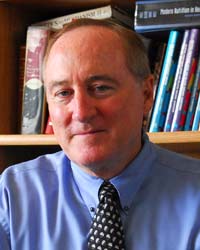Here are some stem cell stories that caught our eye this past week. Some are groundbreaking science, others are of personal interest to us, and still others are just fun.
“Let it Grow” Goes Viral (and National!): Last week on The Stem Cellar we shared one of our favorite student videos from our annual Creativity Program. The video, a parody of the hit song from the movie Frozen, highlighted the outstanding creativity of a group of high school students from City of Hope in Los Angeles. And now, the song has made a splash nationwide—with coverage from ABC 7 Bay Area and even NBC New York!

Students from the City of Hope practice their routine for the group video
Watch the full video on our YouTube page.
Stroke Pilot Study Shows Promise. Researchers at Imperial College London are currently testing whether stem cells extracted from a patient’s bone marrow can reverse the after effects of a stroke.
Reporting in this week’s Stem Cells Translational Medicine the team, lead by Dr. Soma Banjeree, describe their pilot study in which they collect a type of bone marrow stem cells called CD34+ cells. These cells can give rise to cells that make up the blood and the blood vessel lining. Earlier research suggested that treating stroke victims with these cells can improve recovery after a stroke—not because they replace the brain cells lost during a stroke, but because they release a chemical that triggers brain cells to grow. So the team decided to take the next step with a pilot study of five individuals.
As reported in a recent news release, this initial pilot study was only designed to test the safety of the procedure. But in a surprising twist, all patients in the study also showed significant improvement over a period of six months post-treatment. Even more astonishing, three of the patients (who had suffered one of the most severe forms of stroke) were living assistance-free. But since the first six months after injury is a time when many patients see improved function, these results need to be tested in a controlled trial where not all patients receive the cells
Immediate next steps include using advancing imaging techniques to more closely monitor what exactly happens in the brain after the patients are treated.
Want to learn more about using stem cells to treat stroke? Check out our Stroke Fact Sheet.
Deep in the Bowels of Stem Cell Behavior. Another research advance from UK scientists—this time at Queen Mary University of London researchers—announces important new insight into the behavior of adult stem cells that reside in the human gastro-intestinal tract (which includes the stomach and intestines). As described in a news release, this study, which examined the stem cells in the bowels of healthy individuals, as well as cells from early-stage tumors, points to key differences in their behaviors. The results, published this week in the journal Cell Reports, point to a potential link between stem cell behavior and the development of some forms of cancer.
By measuring the timing and frequency of mutations as they occur over time in aging stem cells, the research team, led by senior author Dr. Trevor Graham, found a key difference in stem cell behaviors between healthy individuals, and those with tumors.
In the healthy bowel, there is a relative stasis in the number of stem cells at any given time. But in cancer, that delicate balance—called a ‘stem cell niche’—appears to get thrown out of whack. There appears to be an increased number of cells, paired with more intense competition. And while these results are preliminary, they mark the first time this complex stem cell behavior has been studied in humans. According to Graham:
“Unearthing how stem cells behave within the human bowel is a big step forward for stem cell research. We now want to use the methods developed in this study to understand how stem cells behave inside bowel cancer, so we can increase our understanding of how bowel cancer grows. This will hopefully shed more light on how we can prevent bowel cancer—the fourth most common cancer in the UK.”
Finding the ‘Safety Lock’ Against Tumor Growth. It’s one of the greatest risks when transplanting stem cells: the possibility that the transplanted cells will grow out of control and form tumors.
But now, scientists from Keio University School of Medicine in Japan have devised an ingenious method that could negate this risk.
Reporting in the latest issue of Cell Transplantation and summarized in a news release, Dr. Masaya Nakamura and his team describe how they transplanted stem cells into the spinal columns of laboratory mice.
And here’s where they switched things up. During the transplantation itself, all mice were receiving immunosuppressant drugs. But then they halted the immunosuppressants in half the mice post-transplantation.
Withdrawing the drugs post-transplantation, according to the team’s findings, had the interesting effect of eliminating the tumor risk, as compared to the group who remained on the drugs. Confirmed with bioluminescent imaging that tracked the implanted cells in both sets of mice, these findings suggest that it in fact may be possible to finely tweak the body’s immune response after stem-cell transplantation.
Want to learn more about stem cells and tumor risk? Check out this recent video from CIRM Grantee Dr. Paul Knoepfler: Paul Knoepfler Talks About the Tendency of Embryonic Stem Cells to Form Tumors.











